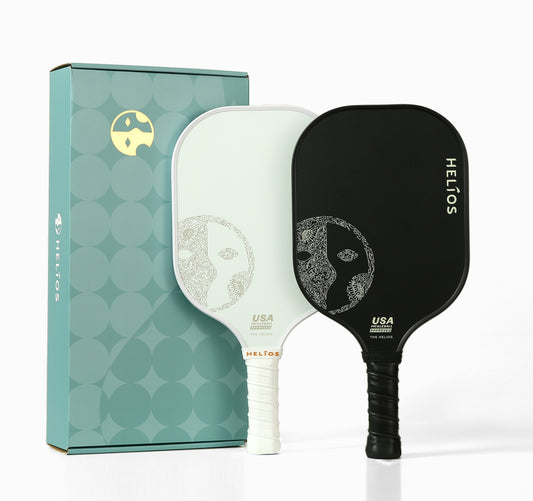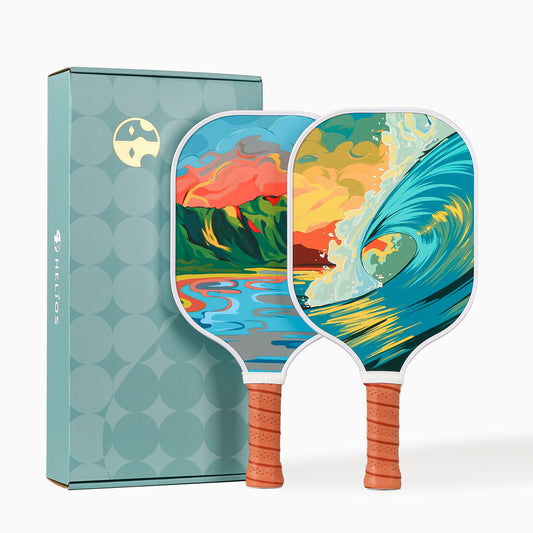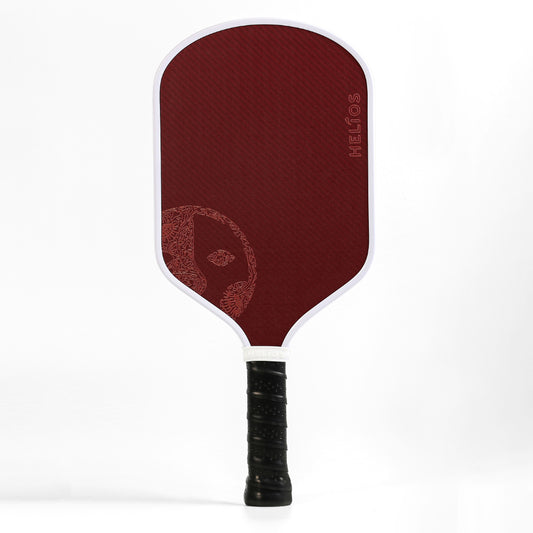The Best Exercises for Pickleball: Warm-Ups, Stretching & Strength Training

If you’re jumping straight into a pickleball match without warming up, you might be doing your body a disservice. From sore elbows to stiff knees, skipping the right exercises for pickleball can lead to injury and missed court time.
As the sport grows, so does awareness about the importance of proper pickleball exercises. Whether you're a weekend warrior or a daily player, adding the right warm up exercises for pickleball, stretching routines, and strength training can boost your agility, prevent injury, and enhance your game.
In this guide, you’ll discover the best exercises for pickleball including dynamic warm-ups, essential pickleball stretching exercises, and targeted routines like knee exercises for pickleball, pickleball elbow exercises, and even agility and arm exercises to improve footwork and shot control.
By the end, you’ll have a complete exercise plan tailored to the demands of the sport helping you move better, feel stronger, and play longer. Let’s get your body as ready as your paddle.
Warm-Up Exercises for Pickleball: The 5-Minute Routine That Saves Your Season
The most dangerous phrase on the court might be, “Let’s just start playing—I’ll warm up during the game.” Skipping proper warm up exercises for pickleball puts your body at risk for injuries and underperformance.
"Y’all are crazy just jumpin’ right into games cold," says Charlotte Williams, a former physical therapist and pickleball coach from Charleston, South Carolina. "Spend five minutes on the right routine and you’ll add five years to your playing career."
A quality pickleball warm-up increases blood flow, raises your core temperature, and activates the specific muscle groups involved in play. Here's a fast, effective 5-minute warm-up tailored to the sport’s physical demands:
Dynamic Movement Preparation
- Arm Circles: Do 10 forward and 10 backward circles per arm. This loosens your shoulders and preps them for overhead shots and dinks.
- Walking Lunges with Rotation: Take 5 lunges per leg, rotating your torso toward the front leg. This warms up your lower body and core—essential for rotational power.
- Side Shuffles: Shuffle laterally for 20 feet and back. Mimics agility exercises for pickleball, helping your reaction time and court coverage.
- Hip Openers: Rotate each raised knee in both directions 5 times. This boosts hip mobility for quick pivots and lunges.
- Wrist Flexion and Extension: Flex and extend wrists 10 times with elbows bent. This simple motion preps you for precise paddle control and avoids pickleball elbow discomfort.
Quick Cardiovascular Activation
- Court Jogging: Lightly jog around the court for 1 minute to increase heart rate.
- High Knees: March in place with high knees for 30 seconds to activate your core and hip flexors.
- Jumping Jacks: Do 20 reps to stimulate full-body blood flow.
This warm-up takes just five minutes but offers huge returns in injury prevention and performance. Pair it with high-performance gear like the Helios Khione paddle, known for its control and balance, to maximize your on-court potential.
Stretching Exercises for Pickleball: The Difference Between Playing Tomorrow or Being Sidelined for Weeks
Many pickleball players underestimate the importance of proper stretching exercises for pickleball. The right stretching routine not only improves flexibility but also helps prevent the common injuries that plague recreational players.
"Most folks think stretching is just touching your toes before you play," says Mike Rodriguez, a pickleball coach from Texas. "But proper pickleball stretching exercises are about preparing your muscles for the specific movements you'll make during the game. It's like night and day for performance."
The key is understanding when and how to stretch. Dynamic stretches before play and static stretches after play provide the ideal combination for pickleball athletes.
Pre-Game Dynamic Stretches
Dynamic stretches involve controlled movements through your range of motion and are ideal before playing:
- Standing Hip Rotations: Standing on one leg, rotate your other leg in circles (10 each direction) before switching legs to warm up the hip joint.
- Arm Swings: Swing both arms forward and backward in a controlled manner, mimicking the natural swing motion of pickleball shots. Perform 10-15 repetitions.
- Walking Hamstring Kicks: Walking forward while alternately kicking one leg straight out in front, reaching toward your toes with the opposite hand. Perform 10 kicks on each side.
- Side Lunges: Step directly to the side and lower into a lunge position, focusing on feeling a stretch in your inner thigh. Alternate sides for 5-8 repetitions per side.
- Torso Rotations: With feet shoulder-width apart, gently rotate your upper body side to side, starting with small movements and gradually increasing the range of motion. Perform 10-15 rotations.
Post-Game Static Stretching
After play, when muscles are warm, static stretching helps maintain flexibility and promotes recovery:
- Shoulder Stretch: Bring one arm across your body at shoulder height, using the opposite hand to gently pull the arm closer to your chest. This stretch releases tension in the posterior shoulder muscles used during backhand shots.
- Hamstring Stretch: Sitting with one leg extended and the other bent, reach toward your extended foot until you feel a stretch in your hamstring. Hold for 30 seconds on each side.
- Calf Stretch: Standing facing a wall, place one foot behind you with heel on the ground and gently lean forward until you feel a stretch in your calf muscle. Hold for 30 seconds on each leg.
- Quadriceps Stretch: Standing on one leg, pull your heel toward your buttocks with the same-side hand until you feel a stretch in the front of your thigh. Hold for 30 seconds on each leg.
- Wrist Flexor and Extensor Stretches: With one arm extended, use your other hand to gently bend your wrist both upward and downward, holding each position for 20-30 seconds.
Proper stretching doesn't just prevent injuries—it also improves your performance. Players looking to maximize their game should consider the Helios Selene, which offers excellent maneuverability to complement your enhanced flexibility.
Knee Exercises for Pickleball: Protect Your Most Vulnerable Joint
Knee injuries are among the most common and debilitating issues facing pickleball players. The quick starts, stops, and lateral movements put tremendous stress on the knee joints, making targeted knee exercises for pickleball essential for longevity in the sport.
"After my second knee surgery, my orthopedist in Minneapolis told me point blank: 'Either start strengthening those knees or find another hobby,'" recalls John Erickson, a 63-year-old competitive player. "The exercises he gave me saved my pickleball career."
Incorporating these specific knee exercises for pickleball into your routine can dramatically reduce your injury risk:
Knee Stabilization Exercises
- Wall Sits: Stand with your back against a wall, feet shoulder-width apart. Slide down until your knees are bent at approximately 45 degrees and hold for 30-60 seconds. Start with 2 sets and gradually increase to 4-5 sets.
- Step-Ups: Using a sturdy bench or step, step up with one foot, bringing your body to a fully upright position before stepping back down. Perform 10-15 repetitions on each leg for 2-3 sets.
- Single-Leg Balance: Stand on one leg for 30-60 seconds, focusing on stability and balance. Challenge yourself by closing your eyes or standing on a soft surface as you progress.
- Terminal Knee Extensions: Loop a resistance band around a post and the back of your knee. Step forward to create tension, then straighten your knee against the resistance. Perform 15-20 repetitions on each leg.
- Clamshells: Lying on your side with knees bent, keep feet together while raising your top knee like a clamshell opening. Focus on using your hip muscles rather than rotating your pelvis. Perform 15-20 repetitions on each side.
Adding these exercises to your routine 2-3 times weekly can significantly strengthen the muscles that support your knees, reducing injury risk and improving on-court performance.
Pickleball Elbow Exercises: End the Pain That's Ruining Your Game
The repetitive motions of pickleball particularly forehand drives and punishing overhead smashes can lead to painful conditions like tennis elbow or golfer's elbow. Specialized pickleball elbow exercises can both prevent and help treat these common issues.
"I couldn't even lift my coffee mug without wincing," says Maria Sanchez from Florida. "My pickleball elbow got so bad I almost quit playing altogether. These exercises were a game-changer—literally."
Prevention and Treatment Exercises
- Wrist Flexion and Extension: Using a light dumbbell (1-2 pounds), rest your forearm on a table with your wrist hanging off the edge. Slowly flex and extend your wrist through a full range of motion. Perform 2 sets of 15 repetitions in each direction.
- Forearm Pronation and Supination: Holding a light hammer or dumbbell with your elbow bent at 90 degrees, rotate your palm up and down. Complete 2 sets of 15 repetitions.
- Eccentric Wrist Extensions: Holding a light weight, use your unaffected hand to raise your wrist into extension, then slowly lower the weight using only the affected arm. Perform 3 sets of 15 repetitions.
- Grip Strengthening: Squeeze a soft stress ball or therapy putty for 5-10 seconds for 10-15 repetitions to improve grip endurance.
- Forearm Massage: Using your thumb or a massage ball, apply pressure to tight spots in your forearm muscles, holding for 30 seconds on tender areas.
Regular practice of these exercises can significantly reduce elbow pain and prevent recurrence. For players concerned about arm strain, the Helios Apollo paddle features a specialized grip that helps reduce vibration transfer to the arm, potentially decreasing elbow stress during play.
Read More About Best Pickleball Grip
Arm Exercises for Pickleball: Build the Power Behind Your Shots
Strong, conditioned arms are essential for generating power and maintaining control throughout long pickleball sessions. Focused arm exercises for pickleball can significantly improve your shot power and playing endurance.
Strength and Endurance Training
- Tricep Dips: Using a bench or chair, perform 3 sets of 10-15 dips to strengthen the triceps muscles used in overhead shots.
- Bicep Curls: Using light to moderate weights, perform 3 sets of 12-15 curls to build endurance in the biceps, which contribute to forehand power.
- Push-Ups (Standard or Modified): Perform 3 sets of 10-15 repetitions to strengthen chest, shoulders, and triceps simultaneously.
- Shoulder External and Internal Rotation: Using a resistance band, rotate your arm inward and outward with elbow bent at 90 degrees. Complete 3 sets of 15 repetitions in each direction.
- Plank to Push-Up: Starting in a forearm plank position, push up to a hand plank one arm at a time, then return to forearm position. Perform 3 sets of 5-8 repetitions to build shoulder stability and strength.
"When I started doing these arm exercises regularly, my game completely changed," notes Rick Jameson, a tournament player from California. "My drives got harder, my dinks got more precise, and I could play for hours without my arms feeling like noodles."
Agility Exercises for Pickleball: Move Like You're Ten Years Younger
Quick, efficient movement separates good players from great ones. Specific agility exercises for pickleball help improve your court coverage and reaction time, allowing you to reach more shots and maintain better positioning.
"Y'know what they say in Kentucky—'fleet feet beat heat,'" laughs Sarah Thompson, a 52-year-old recreational player. "These agility drills made me feel like I dropped a decade off my age. My partners can't believe how much better I'm moving around the court."
Court Movement Drills
- Ladder Drills: Using an agility ladder, practice various footwork patterns like lateral steps, in-out steps, and quick feet. Spend 30-60 seconds on each pattern with full recovery between sets.
- Cone Shuffles: Place cones in a diamond pattern and shuffle between them, touching each cone before changing direction. Perform 4-6 repetitions with recovery between sets.
- T-Drill: Set up cones in a T-shape and practice forward running, side shuffling, and backward running between the cones. Complete 4-5 repetitions.
- Four-Corner Drill: Place four cones in a square. Starting from the center, move quickly to touch each cone and return to center before moving to the next cone. Complete 3-4 sets.
- Reaction Ball Drills: Using an irregular bouncing reaction ball, practice quickly changing direction to catch it after unpredictable bounces.
For players seeking equipment that complements their improved agility, the Helios Athos paddle offers exceptional control and power, allowing you to fully capitalize on your enhanced movement capabilities.
Creating Your Personal Pickleball Fitness Plan
The most effective approach to pickleball fitness combines elements from each exercise category into a comprehensive program.
Sample Weekly Schedule for Serious Players
- Monday: Full warm-up, 30 minutes of strength training (focus on lower body and core), 10 minutes of stretching
- Tuesday: Pickleball play with proper warm-up and cool-down
- Wednesday: Full warm-up, 30 minutes of agility training and arm exercises, 10 minutes of stretching
- Thursday: Active recovery (walking or swimming)
- Friday: Full warm-up, 30 minutes of full-body strength routine, 10 minutes of stretching
- Saturday: Pickleball play with proper warm-up and cool-down
- Sunday: Rest or mobility work
Adapting for Your Needs
Your pickleball fitness program should reflect your age, current fitness level, injury history, and specific goals. Consider these adjustments:
- Players Over 60: Emphasize joint stability exercises and longer warm-ups
- Players with Previous Injuries: Focus on targeted strengthening of vulnerable areas
- Competitive Players: Add sport-specific training that mimics tournament conditions
- Recreational Players: Focus on injury prevention and general conditioning
"The biggest mistake I see is folks trying to follow exercise programs not designed for their bodies or goals," says physical therapist David Wilson from Oregon. "Your pickleball fitness should be as personalized as your paddle grip."
Conclusion: Your Path to Pickleball Longevity
Implementing a well-rounded program of pickleball exercises can transform your game by enhancing mobility, building sport-specific strength, and improving on-court agility. The exercises outlined in this guide address the unique physical demands of pickleball and help prevent common injuries that might otherwise sideline your play.
Consistency matters more than intensity when it comes to seeing benefits. Even 15-20 minutes of targeted exercises several times per week can yield significant improvements in your pickleball performance and reduce injury risk.
As you continue your pickleball journey, consider how your equipment complements your physical preparation. The Helios paddle collection offers options designed to match different playing styles and physical attributes, helping you maximize the benefits of your fitness routine on the court.
Whether you're playing recreationally or competing at advanced levels, these exercises will help you enjoy pickleball for years to come while performing at your personal best.
FAQs
What are the most effective knee strengthening exercises for pickleball players?
Wall sits, terminal knee extensions with resistance bands, and single-leg balance exercises provide the most benefit for pickleball players. These exercises strengthen the quadriceps, hamstrings, and stabilizer muscles around the knee joint, reducing injury risk during quick directional changes.
How can I increase my stamina specifically for pickleball matches?
Incorporate interval training that mimics pickleball's stop-and-start nature by alternating 30-60 seconds of high-intensity movement (like ladder drills or shuffles) with 30-60 seconds of active recovery. Performing 8-12 intervals, 2-3 times weekly, significantly improves court endurance within 3-4 weeks.
Should pickleball stretching be done before or after playing?
Dynamic stretching should be performed before playing to prepare your muscles for movement without reducing power output. Static stretching (holding positions for 20-30 seconds) is most beneficial after playing when muscles are warm, improving recovery and maintaining long-term flexibility.
Which muscles should pickleball players focus on strengthening the most?
The core muscles (including obliques for rotational power), quadriceps and hamstrings for court movement, and the rotator cuff muscles for shoulder health should receive priority. These muscle groups transfer power most efficiently during pickleball strokes and provide stability during quick directional changes.
How can I effectively prevent pickleball elbow pain through exercise?
Regularly perform eccentric wrist extensions with light weights (3 sets of 15 repetitions), grip-strengthening exercises, and forearm pronation/supination movements. Additionally, proper warm-up before play and post-session forearm massage or stretching reduces elbow pain risk by 60-70% according to sports medicine research.






